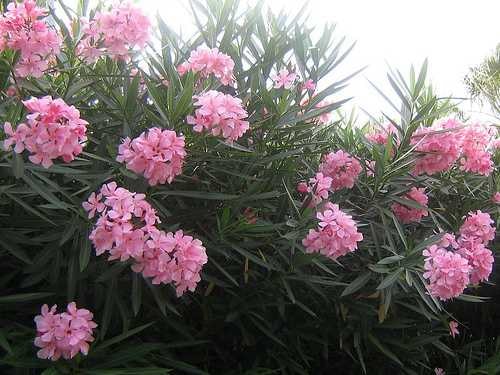Oleander - Beautiful flower, easily causes poisoning
In Vietnam, people in some regions use oleander to treat scabies by pounding the leaves and applying them directly or boiling them in concentrated water to wash, but this is very dangerous.
 |
Oleander (Nerium indicum Mill.) belongs to the oleander family (Apocynaceae), also known as peach pear, is a beautiful flower plant grown as an ornamental plant in flower gardens, parks, roads, and home gardens. In ancient times, people soaked oleander leaves in alcohol to apply externally to treat snake bites. In Vietnam, people in some regions also use oleander to treat scabies by pounding the leaves and applying directly or boiling the water to wash, but this is very dangerous.
Because the whole oleander plant has a very bitter and poisonous opaque sap, hydrocyanic acid and toxic glucosides such as oleandrin, neriin, neriantin. Ancient medicine has recognized that oleander is very poisonous. Cows and horses that ate some fresh oleander leaves were poisoned. People who ate the meat of animals that died from oleander leaves were also poisoned. Through testing, people found that people who drank water that had fallen oleander leaves or water soaked with oleander roots would be poisoned.
The fresh bark and wood of the oleander stem are more poisonous than the leaves. In Corsica, France, there have been cases of poisoning from eating oleander skewers and drinking water from oleander-stoppered bottles. Although the flowers are less poisonous than other parts, they can still contaminate water. The poison remains intact in boiled or dried parts of the oleander plant. Honey containing oleander nectar and pollen is also said to be poisonous.
Symptoms of oleander poisoning include discomfort, fatigue, nausea, dizziness (with small doses); bloody diarrhea, respiratory disorders, vomiting, convulsions, arrhythmia, weak pulse leading to coma and death (with high doses). Therefore, do not plant oleander near water sources such as wells, ponds, and water tanks; do not tie or release livestock under oleander trees; do not let children pick oleander flowers because children can easily put them in their mouths; do not use oleander leaves to treat skin diseases in any form.
According to health and life
| RELATED NEWS |
|---|
